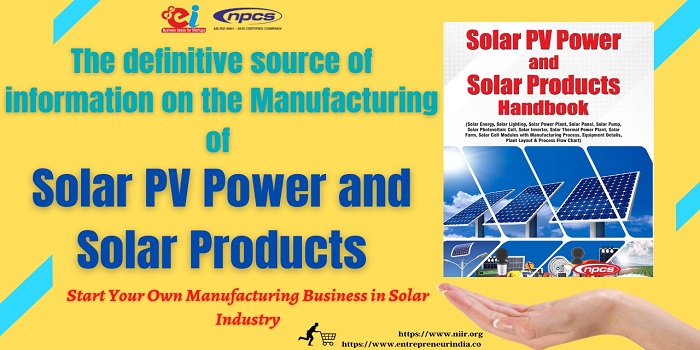Introduction:
Solar energy is expanding worldwide and becoming an increasingly important part of the energy mix in many countries. Solar energy is used all over the world, but in terms of total installed solar capacity, India, China, Japan, and the United States are now top of the world. Solar panels can create power almost anywhere on the planet. However, some regions receive more sunshine than others and hence have a greater solar energy potential. It is based on insolation, which is a measurement of how much solar radiation reaches a specific area on the earth’s surface.
Visit this Page for More Information: Start a Business in Renewable Energy Industry
Solar energy can be captured in a variety of ways. Photovoltaic solar panels are the most frequent method. Photovoltaic (PV) devices use semiconductors to generate power directly from sunlight. Photons impact and ionize semiconductor material on the solar panel as the silicon photovoltaic solar cell absorbs solar energy, causing electrons to break free of their atomic bonds.
A flow of electrical current is created when electrons are compelled to move in one direction. Only a portion of the light spectrum is absorbed, while the rest is reflected, too faint (infrared), or generates heat rather than electricity (ultraviolet). Concentrated solar power is the second type of solar energy technology (CSP). Solar thermal energy is used in CSP facilities to create steam, which is subsequently turned into electricity via a turbine.
Book Link: Solar PV Power and Solar Products Handbook
About the Book:
The solar PV energy & solar products handbook provides a comprehensive list of every aspect to solar power, whether it’s residential use or commercial use. This includes pictures & diagrams with step-by-step instructions on how to install each product & what materials you need. Whether you’re thinking about installing it yourself or hiring someone else to do it, they provide guidance in both cases. Start off your project by reviewing their guide!
Download PDF: Solar PV Power and Solar Products Handbook
The solar energy industry has boomed in recent years, with interest in the subject skyrocketing. Whether you’re interested in solar energy as an investment or as a way to lessen your impact on the environment, there are many things to consider before taking the leap into solar power generation. This Solar PV Energy and the Solar Products Handbook explores how this alternative energy source works, what it can be used for, and what you should expect if you’re considering investing in it yourself.
Read Similar Articles: Renewable Energy
Market Outlook:
The global solar energy installed capacity is estimated to reach 1,645 gigawatts (GW), registering a CAGR is 13.78%. The growth of the solar energy market is driven by an increase in environmental pollution and the provision of government incentives & tax rebates to install solar panels. In addition, a decrease in water footprint associated with solar energy systems has fueled their demand in power generation sectors. The demand for solar cells has gained major traction owing to a surge in rooftop installations, followed by an increase in applications in the architectural sector. Furthermore, the demand for parabolic troughs and solar power towers in electricity generation is expected to boost the demand for concentrated solar power systems.
Only the two commonly recognized kinds of technology for converting solar energy into electricity — photovoltaics (PV) and concentrated solar power (CSP, also known as solar thermal) — are considered in their current and possible future forms in The Future of Solar Energy.
- Expanding the solar sector considerably from its current small size may result in developments that no one can predict right now. Solar deployment in the future will be highly influenced by uncertain future market conditions and public policies, including but not limited to measures aimed at mitigating global climate change.
Related Feasibility Study Reports: Renewable Energy Sector, Green Power, Solar Energy, Biofuel, Hydroelectric, Wind, Geothermal, Biomass, Non-conventional Energy, New and Renewable Energy Projects
Conclusion:
The book covers a wide range of topics connected to Solar, as well as their manufacturing processes. It also includes contact information for machinery suppliers, as well as images of equipment.
A complete guide on Solar PV Power and Solar Products manufacture and entrepreneurship. This book serves as a one-stop-shop for everything you need to know about the Solar, which is ripe with opportunities for manufacturers, merchants, and entrepreneurs. This is the only book that covers Solar PV Power and Solar Products in depth. From concept through equipment procurement, it is a veritable feast of how-to information.
See More Links:
Start a Business in Potential Countries for Doing Business
Best Industry for Doing Business
Business Ideas with Low, Medium & High Investment
Looking for Most Demandable Business Ideas for Startups














